Volvo – 90 лет таксования!

22 August 2019
Почти девять десятков лет по дорогам Швеции и многих стран мира колесят такси марки Volvo
In March 1930, using the factory gates rolled out the first custom cars Volvo for use in a taxi. Since then, the firm Volvo almost continuously (with a break at the end of the 1950s and 60s) releases taxi for almost 90 years. Only a few car brands can boast of as long and successful life on one of the toughest segments of the automotive market.
Car-taxi lives harder than most other cars. He works very long and hard. It is a tool, workplace, road capsule. It needs to carry almost everything and always needs to be workable. Therefore, the supply of vehicles for use in taxi, perhaps, the most honorable mission that can be fulfilled by the car manufacturer. What can be the best evaluation of the quality, reliability, durability, safety and comfort of the car than use it as a taxi?
In fact, the Volvo brand has appeared on the taxi market already in 1929, when he produced his first six-cylinder PV651 model from any Swedish taxi drivers. The taxi market was the segment in which Volvo and wanted out. Thus, the logical consequence was that in 1930, Volvo has released two models of the TR671 and TR672 specifically designed for use in a taxi (on the splash screen model cab TR679 sample 1934). Was also offered a version TR670 in the form of "naked" chassis, specifically designed for independent producers bodies. The letters TR in the index of the model meant Traffic Car, i.e. a car to a taxi, figure 6 indicates the number of cylinders and 7 seats. The last number indicates modification. Elongated frame model PV650 allowed to bring the wheelbase up to 3100 mm, which, in turn, made it possible to fit seven passengers in the spacious passenger cabin compartment, while the Luggage according to the tradition of that time still housed on the external back. Although the technical stuffing of the chassis remains mostly the same, the body was made in the style of the time with more rounded forms and an integrated trunk, and the front end got so false radiator grille, called "lace bow". Thanks extended to 3250 mm wheelbase in the cabin, comfort was deployed for a total of eight passengers, and indestructible six-liter engine capacity of slightly less than 3.7 liter gave almost 90 BHP
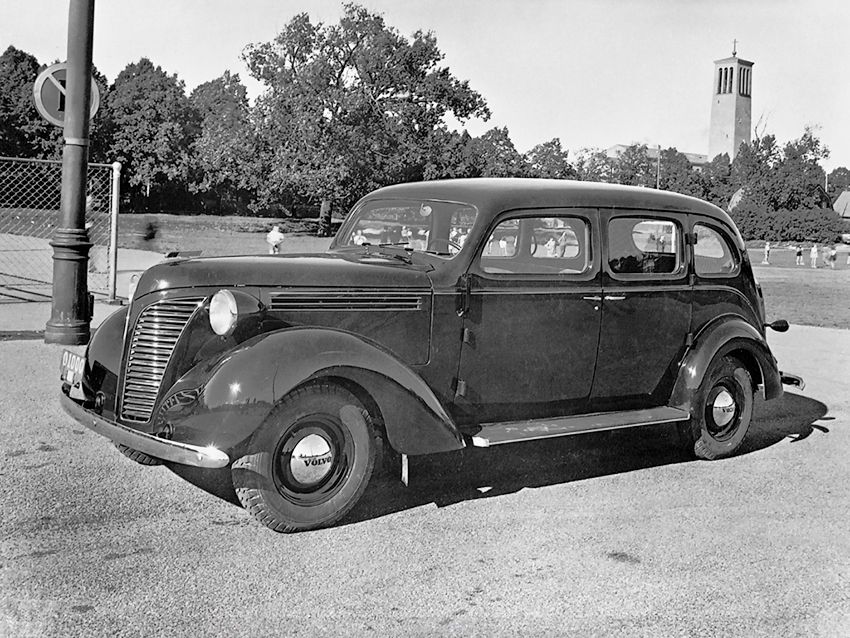
Eight taxi Volvo PV801 of 1938, produced until 1947, i.e., throughout the Second world war
This line was made continuously for almost ten years (i.e. in the midst of the Second world war – in the years 1943-45, when cars (except jeeps) were not allowed except for Sweden no country in the world – ed.) ie, before 1948, in the period until 1950, when a new specialized model for a taxi, it replaced the passenger model PV60."Suggan" debuts
Perhaps the most famous of taxi Oldtimer Volvo – which debuted in 1950, the PV831, the people affectionately nicknamed "Suggan" (in Russian- sow).
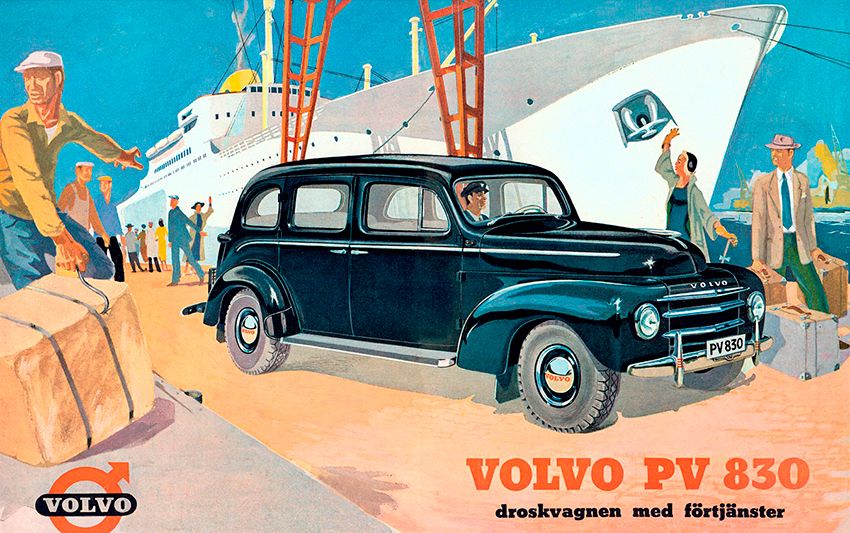
Perhaps, in the 1950s and 70s are huge sedans-taxi PV830 was no less a symbol of the city than their English colleagues Austin Taxicab – a symbol of London
Taxi again got a huge 7-8-seater body in American style, basically identical to the model 801/802, mounted on a sturdy frame, but with front independent suspension. Under the hood he had the same powerful 3.7-liter six, now developed 90 BHP, and the body in "good tradition" taxi of those times was equipped with the back doors on rear hinges for ease of entry and exit of passengers. The exterior of the front became more streamlined and modern, much like the styling of the small car PV444, with horizontal chrome slats of grille and integrated front fenders. In the version "naked" chassis, 8-ka, as necessary and at the customer's request could be, for example, an ambulance, a pickup truck or a hearse. In the 1950s still had a Legion of independent coach building firms.Volvo also released the "civilian" version called Disponent ("the Manager"), which was conceived as an Executive car driven by a hired driver. It is very comfortable and spacious interior was decorated by high quality woolen fabric, on the floor were soft rugs, and for a fee was provided and a few cigarette lighter (never, however, called on high-end cars). However, it is the taxi version has become dominant, unlike dubbed as "Hisings-Packard" (CKD – want to be Packard) model Disponent. The last of the 8-series model PV834 disappeared from the model program in 1958, becoming the latest specialized taxi Volvo.
Short break
The Volvo Amazon (P120 called in export markets – ed.), which was introduced in 1956, actually did not differ a spacious interior, suitable for use in a taxi. However, in some countries, the Amazon is still used as a taxi, for example, in Switzerland.
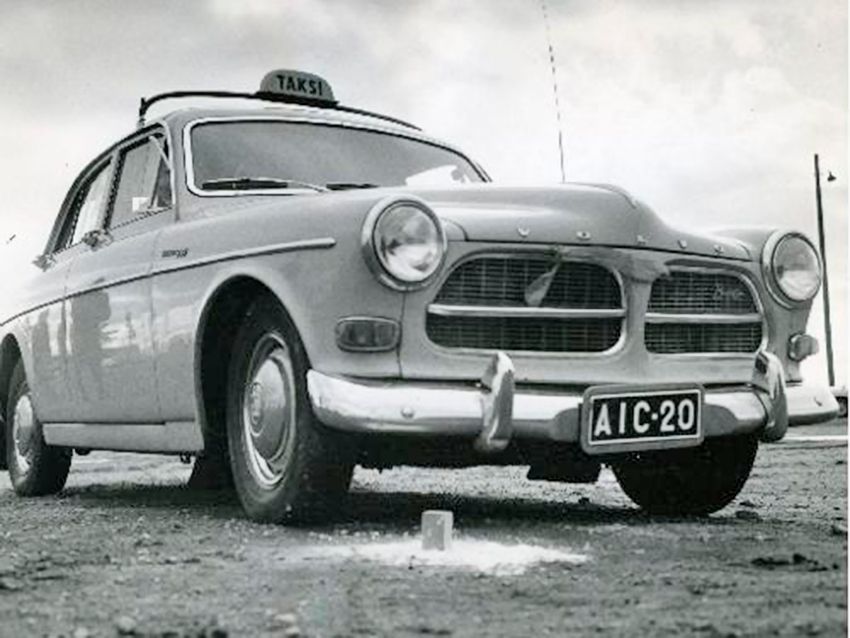
Sedan Volvo P122 Amazon was a strong car, but its interior for a taxi was too close
This does not mean that taxi 8-series disappeared from the streets of Swedish cities. On the contrary, due to the fact that they were sturdy and virtually unbreakable, many instances even in the 1970s continued to be actively used taxi cab drivers (and unsurprisingly, in terms of capacity, they actually correspond to the current minivans and a direct replacement then they just were not – ed.).
To return to the taxi market Marche helped Volvo model 144 , issued in 1966
Model, which was able to return the Volvo on the taxi market, has become the "144-ka", which was first introduced in 1966. The new four-door sedan with classic design, made in a timeless style with straight clean lines, perfect as a taxi, and the demand from the taxi industry has not kept itself waiting. The fact that the model was not offered with a diesel engine, which was offered by some competitors (ie Mercedes-Benz and Peugeot – ed.) the market is not bothered. It was a real Volvo. However, there was no more seven - or eight-body. Times have changed, and four passengers in a taxi, plus the driver has become a common practice. The General view in the "144-ke", wheelbase which was only 2600 mm, for foot passengers was no longer the old space as the old "831st", but the space for Luggage in the trunk was much larger than before.Gasoline, diesel fuel and gas
Since the introduction of the Volvo 144 taxi buyers usually offered four-door sedans and five-door wagon the following models: 200, 700, 900 series and 850 series, models S70, V70, S80, and 2000s – even the XC90 crossover. Compact model 400 series were also sometimes used as a taxi in 1980-90 (in vain the Swedes say – in a number of countries and the Soviet Lada was considered quite spacious and sturdy car for taxi – bus).
With the advent of Volvo cars since 1979, a diesel engine – it also has become an alternative for taxi, and, over the years this type of internal combustion engine has been continuously improved and perfected. By the mid-2000s in Europe with diesel versions accounted for the largest volume of sales of Volvo cars for taxis.
Since 1996, another alternative fuel has become natural gas (methane) and biogas that are applied in bi-fuel versions of Volvo models.
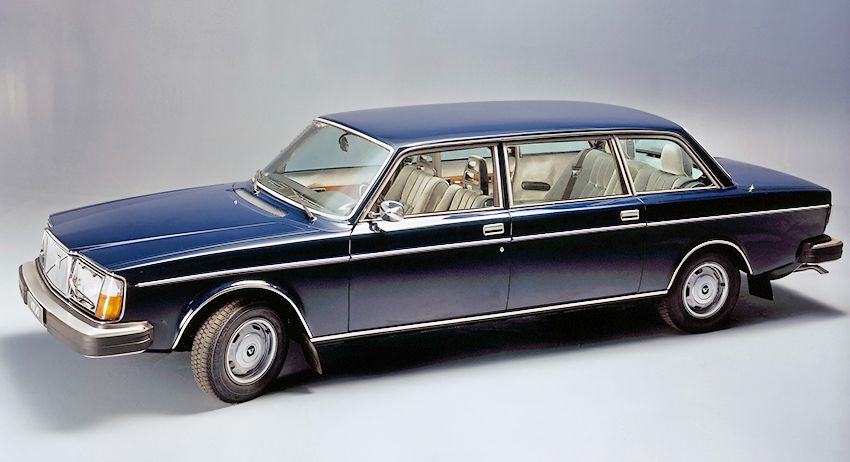
Serial stretch Volvo 264TE 1977 model year
A rather large application in taxi services and found a 7-seater Strachey on the basis of the Volvo 200 -, 700-and 900-series, which again helped to carry more than four passengers at a time – technique, as is known, develops in a spiral.Record run
Taxi rides average 150 000-200 000 km per year, i.e. four or five lengths of the equator. In the Northern parts of Sweden, Norway and Finland, where distances between settlements are great, there are cases when a taxi runs a year more.
Cab Volvo also often set these records on vehicle mileage. Cars-taxis, which are still used with the same engine runs at 500 000-600 000 km in the 2000s were not uncommon.
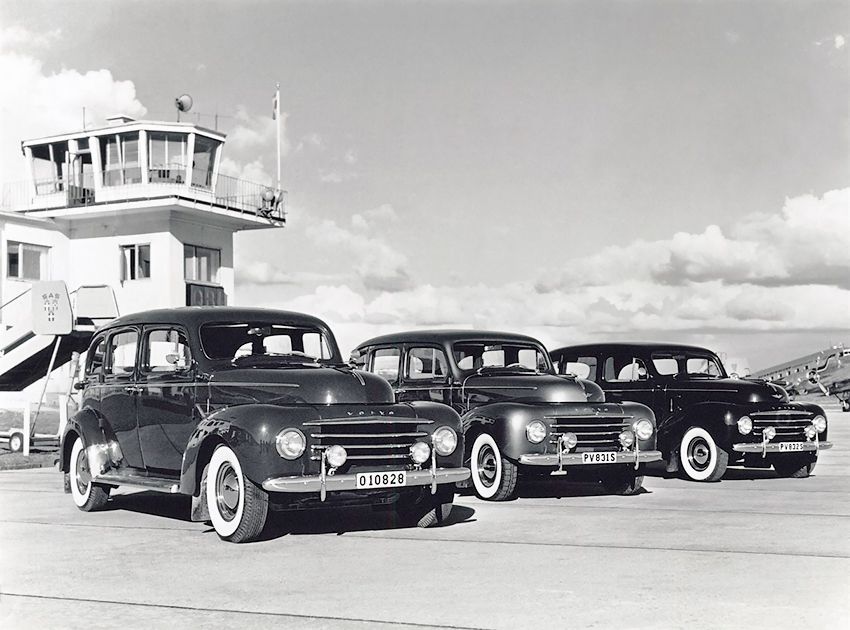
In Stockholm Volvo PV830 taxi was still used in the 1970s, and one instance of a taxi PV832 release in 1954, was still used in 2005 in the summer in southern Sweden. This instance had rambled over 1,000,000 miles (1.6 million km)!
taxi Concept 1976
At the time, Volvo Cars has proved that it has an idea of how it should look and work a real taxi, which was demonstrated on the concept, which was shown in 1976. This experimental cab Volvo has even won the design competition for the taxi of tomorrow, announced by the Museum of modern art in new York.
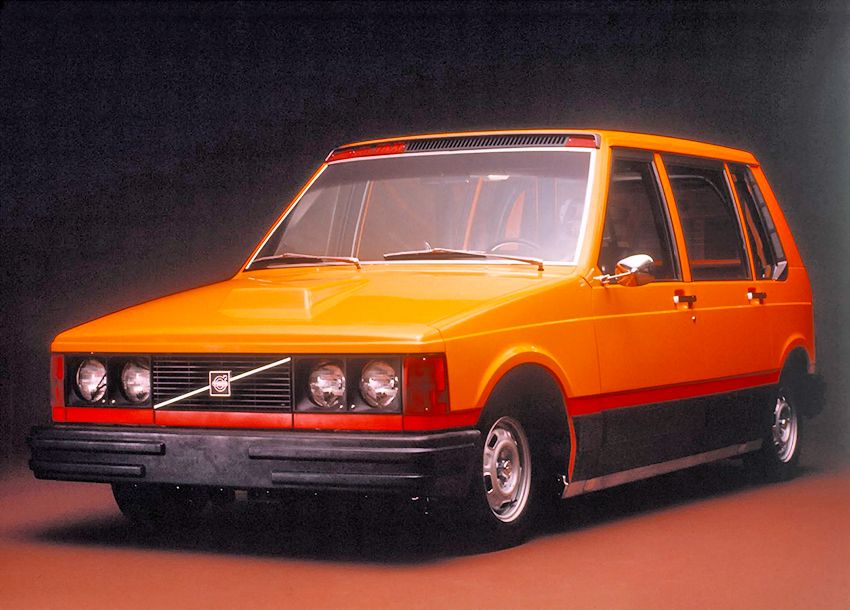
The prototype is Volvo New York Taxi Concept is an alloy of innovative solutions for safety, functionality and ergonomics
On front-wheel drive (!) chassis with a low flat floor was placed a special body with a passenger compartment, designed for three people and is completely separated from the driver's cab.jpg">A prototype of Volvo New York Taxi Concept '1977 is also available for inspection at the Volvo Museum in Gothenburg
Sales of Volvo Cars in the taxi market since the mid-1990s, is in charge of Volvo Car Special Vehicles. Sales of the Volvo taxi is about 2000 vehicles per year. The biggest markets for taxi Volvo in addition to its Swedish and other Scandinavian countries are still several European markets, including some rather exotic. For example, several sedans, the Volvo 144 from the beginning 1970-x years worked as a taxi in the capital of North Korea Pyongyang.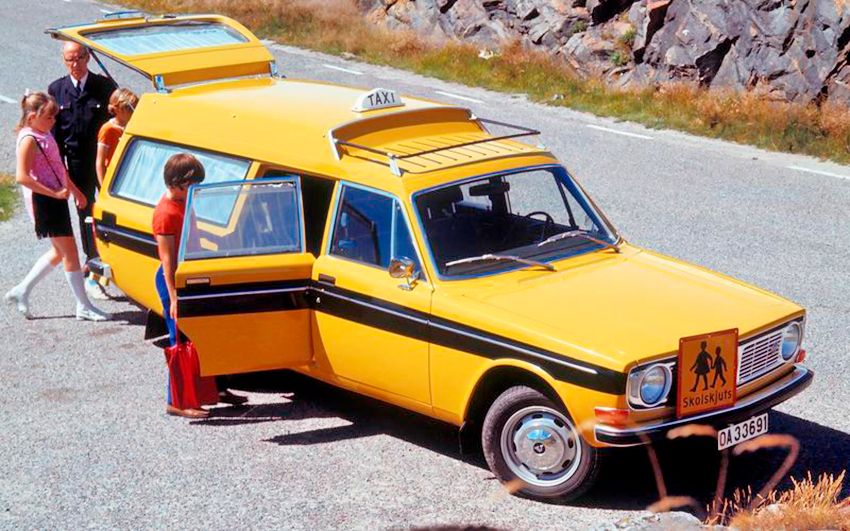
Secmodel taxi Volvo 145 Express 1970 sample used, for example, to transport children
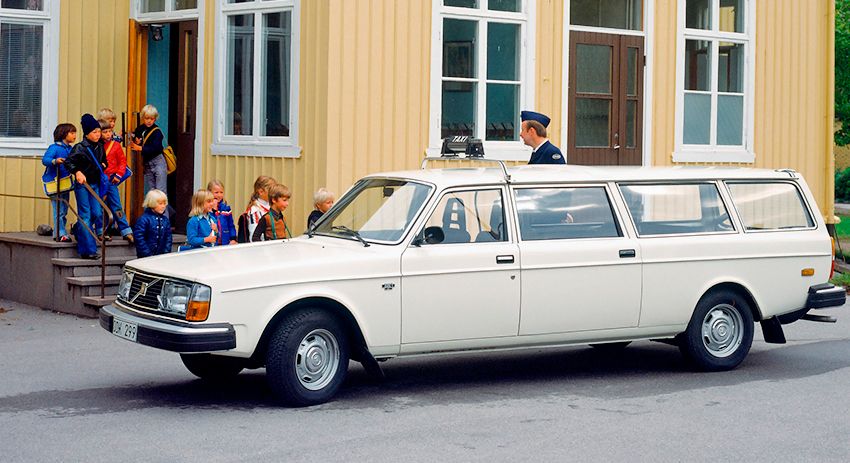
Another great Horde of children it was possible to carry on such here stretch the Volvo 245 Transfer station wagon model in 1981
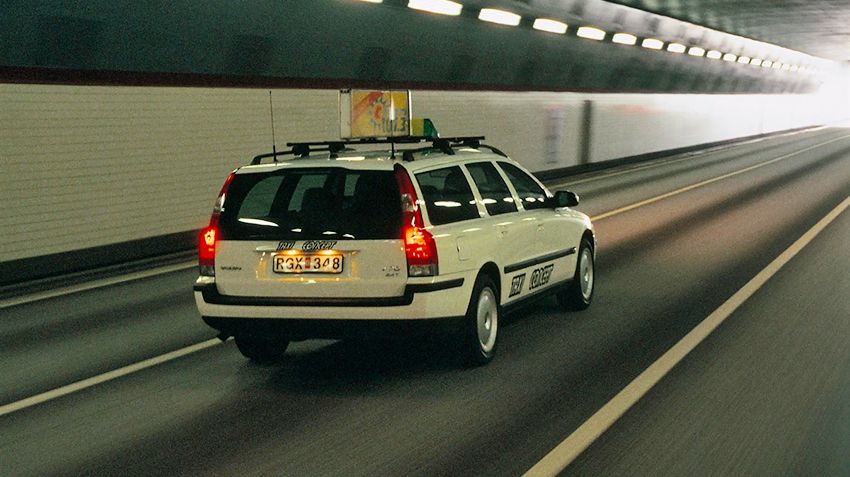
Modern models of Volvo from Volvo Car Special Vehicles are in demand not only in Scandinavia
In total, a division of Volvo Car Special Vehicles produces and sells annually about 20 000 Volvo cars special versions.
Recall that the celebration of the 90th anniversary of Volvo Taxi will take place in 2020.
.
|
|
|
Element was not found.








